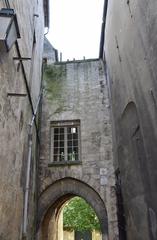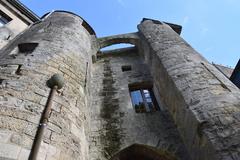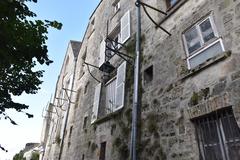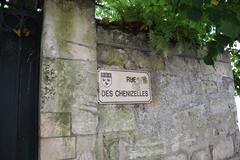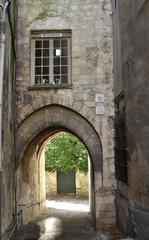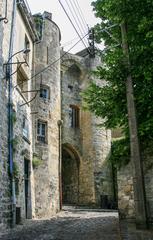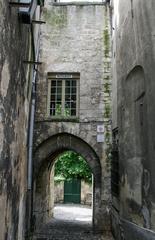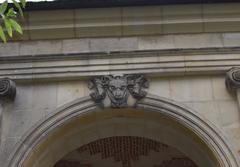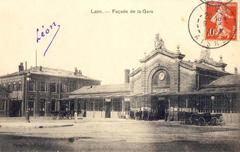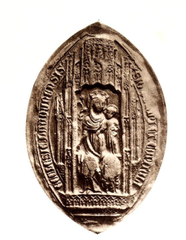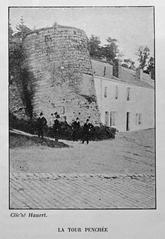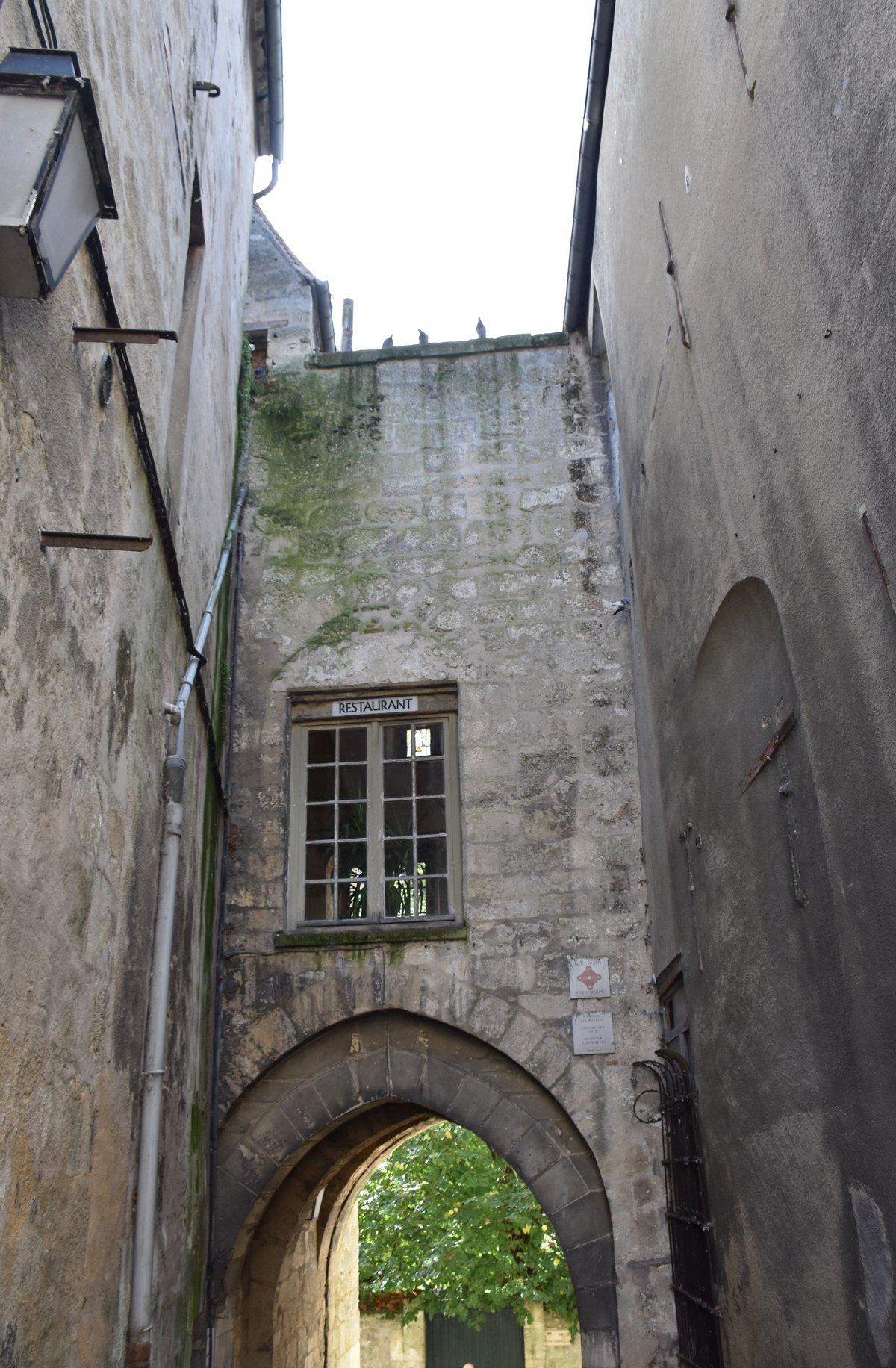
Porte des Chenizelles, Laon, France: Visiting Hours, Tickets, and Travel Guide
Date: 14/06/2025
Introduction
Standing atop the dramatic limestone plateau of Laon, the Porte des Chenizelles is one of the city’s most iconic and best-preserved medieval gateways. Constructed in the late 12th to early 13th century, this formidable gate played a crucial role in the city’s defense and remains a symbol of Laon’s rich historical legacy. Today, it offers visitors not only a glimpse into the past but also access to scenic walks, cultural experiences, and panoramic views across the historic upper town (Monumentum, Tourisme Pays de Laon, Laon Tourism, Hauts-de-France Tourism).
Historical Overview
Origins and Medieval Construction
The origins of the Porte des Chenizelles trace back to the era of King Philippe Auguste in the late 12th and early 13th centuries, when Laon underwent significant urban expansion. The gate was conceived as part of a sweeping project to reinforce the city’s defenses, integrating with over 8 kilometers of ramparts that established Laon as one of the most fortified towns in France (Monumentum, POP Culture Gouv). Positioned to control access from the Cuve Saint-Vincent valley, it protected the vital Bourg district and regulated commercial and military movement.
Architectural Features and Defensive Role
Constructed from locally quarried limestone, the gate features classic medieval defensive elements:
- Portcullis (Herse): A heavy, vertically sliding grille to block entry.
- Assommoir: An opening above the passageway for dropping projectiles on attackers.
- Twin Towers: Slender, originally topped with conical roofs, enhancing both defense and visual impact.
- Machicolations and Arrow Slits: For defenders to observe and repel assailants (Tourisme Hauts-de-France, Patrimoine-Histoire).
These features made the Porte des Chenizelles a formidable obstacle during medieval conflicts, serving as a critical checkpoint in the city’s defensive network.
Evolution Through the Centuries
The gate’s military function waned by the 17th century as advancements in artillery diminished the effectiveness of medieval walls. However, its urban and symbolic significance endured. In 1663, a chemin de ronde (wall-walk) was added, linking it to other city gates. The name “Chenizelles” is thought to reference historic water channels or perhaps a lost church nearby, reflecting the gate’s changing relationship with its surroundings (Tourisme Pays de Laon).
Artistic and Cultural Significance
Over time, the Porte des Chenizelles evolved from a purely defensive structure to a cultural emblem of Laon. It has featured in local iconography, artworks, and even once bore a statue of Henri IV on horseback. Its enduring silhouette—arched passage flanked by towers—remains a potent symbol of the city’s identity (Monumentum).
Visitor Information
Visiting Hours and Tickets
- Hours: The gate is freely accessible year-round, best visited during daylight (9:00 AM–6:00 PM) for safety and optimal viewing.
- Tickets: No ticket is required to view the gate and ramparts. Guided tours—including the Porte des Chenizelles and other sites—may require advance booking and a fee (typically €5–€12) (Tourisme Pays de Laon).
- Accessibility: The area features cobbled streets and some steps; partial accessibility is available, but visitors with mobility challenges may require assistance.
Getting There
- By Car: Laon is about two hours from Calais or Dunkirk; parking is available in the upper and lower towns, but spaces are limited near the medieval center.
- By Train: Regular SNCF services connect Laon to Paris Gare du Nord in under two hours.
- By Foot: The gate is part of Laon’s heritage walk and easily reached from the city center (Petit Futé).
Facilities
- Parking: Public lots in the upper town; arrive early on weekends or festival days.
- Restrooms: Near the Chapelle des Templiers, which also houses the tourist office.
- Refreshments: Cafés and restaurants, such as “Au Made in France” and “Restaurant Le 8,” are within walking distance.
Guided Tours and Nearby Attractions
- Guided Tours: Available through the Laon Tourist Office, covering the ramparts, city gates, and sometimes the underground quarries. Tours offered in French and, on request, in English (Hauts-de-France Tourism).
- Self-Guided Walks: Informational plaques provide historical context; the 7-kilometer ramparts walk includes panoramic viewpoints and other gates.
- Nearby Sites: Laon Cathedral, Chapelle des Templiers, Porte d’Ardon, and the Promenade des Remparts.
Best Time to Visit
- Seasons: Spring (April–June) and early autumn (September–October) offer mild weather and vibrant scenery, coinciding with local festivals and events (touristplaces.guide).
- Photography: Late afternoon provides dramatic lighting for photos of the gate and cityscape.
Accessibility and Safety
- Terrain: Uneven cobblestones and some steep sections; sturdy shoes are recommended.
- Wheelchair Access: Limited due to historic surfaces; contact the tourist office for advice on accessible routes.
- Children: Suitable for families, but supervision is needed near ramparts.
Cultural and Educational Context
The Porte des Chenizelles is central to Laon’s identity as a “City of Art and History.” Featured in local festivals and municipal branding, the gate is both a living monument and an educational resource. School groups and visitors alike use the site to learn about medieval defense, city planning, and the evolution of urban architecture (Ville de Laon).
Preservation and Recognition
Designated a Monument Historique since 1932 (POP Culture Gouv), the Porte des Chenizelles is protected and maintained through ongoing conservation. Restoration efforts focus on structural stability and visitor safety, while interpretive signage and digital resources enrich the experience (DRAC Hauts-de-France).
Frequently Asked Questions (FAQ)
Q: What are the visiting hours for Porte des Chenizelles?
A: Open year-round, best visited during daylight (9:00 AM–6:00 PM).
Q: Is there an entrance fee?
A: No, the gate and ramparts are free to access; guided tours may require a ticket.
Q: Are guided tours available in English?
A: Yes, by request through the Laon Tourist Office.
Q: Is the site accessible for wheelchair users?
A: Accessibility is limited due to cobbled surfaces; consult the tourist office for alternative routes.
Q: What other attractions are nearby?
A: Laon Cathedral, Porte d’Ardon, Chapelle des Templiers, and the Promenade des Remparts.
Practical Tips for Your Visit
- Wear comfortable, sturdy footwear for uneven surfaces.
- Visit during spring or autumn for optimal weather and events.
- Plan early morning or late afternoon visits for the best photography.
- Check the Laon Tourism website for updated event and tour schedules.
Visual Resources
- View high-resolution images of the gate and ramparts on the official tourism site.
- Interactive maps and virtual tours are available for planning and orientation.
Final Thoughts
The Porte des Chenizelles is more than a relic; it is a living part of Laon’s story, linking past and present. Its formidable architecture, strategic location, and enduring cultural role make it a must-visit for anyone exploring northern France’s medieval heritage. With free access, guided tour options, and proximity to other landmarks, it offers a rewarding experience for history enthusiasts and casual travelers alike. Enhance your exploration with the Audiala app for self-guided tours, and immerse yourself in the atmosphere of this remarkable gateway.
Plan your journey through Laon’s history—start with the Porte des Chenizelles and discover the stories embedded in its ancient stones.
Sources and Further Reading
- Monumentum
- POP Culture Gouv
- Tourisme Pays de Laon
- Paris Plus Plus
- Tourisme Hauts-de-France
- Laon Tourism
- Remparts de France
- Base Mérimée
- Hauts-de-France Tourism
- Petit Futé
- Tourist Places Guide
- Information France
- Ville de Laon
- Patrimoine-Histoire
- DRAC Hauts-de-France
- Hikersbay
